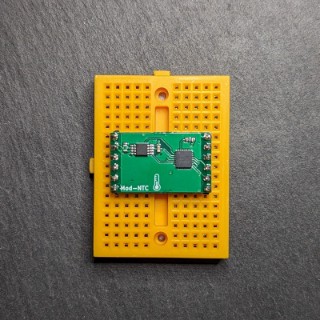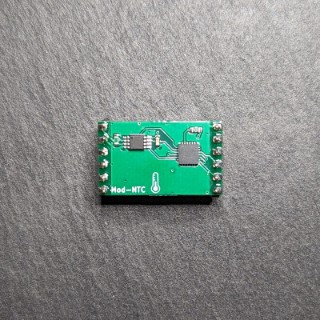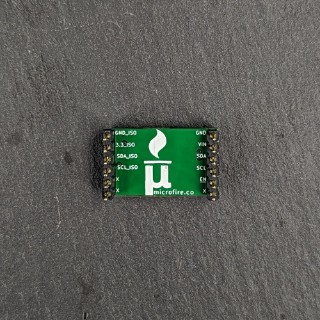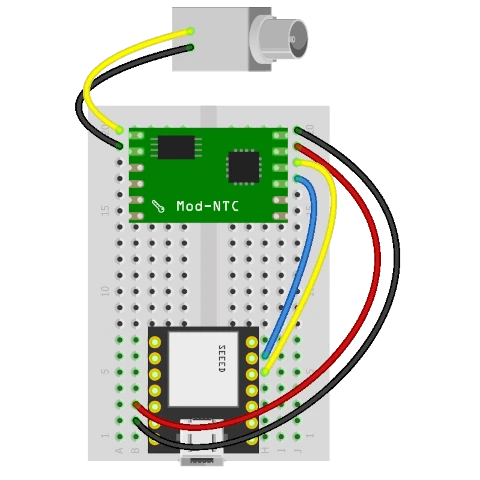🌡️ Mod-NTC
🔰 Easy
Easy I2C interface, simple API, minimal technical knowledge required
🎯 Accurate
- Resolution 0.125 °C
- no self-heating error
Code
-
1#include <Microfire_Mod-NTC.h>2Microfire::Mod_NTC::i2c ntc;3void setup() {4Serial.begin(9600);5Wire.begin();6ntc.begin();7}89void loop() {10ntc.measureTemp();1112Serial.println((String)ntc.tempC + " °C");13delay(1000);14}
Read more here -
1...2# import the component3external_components:4- source:5type: git6url: https://github.com/u-fire/ESPHomeComponents/78sensor:9- platform: mod_ntc10id: ntc11...
Read more here
Other stuff you'll need
This is just the module. You could...
- Use it in a breadboard. To do that, you'll need to connect the I2C bus and probe connections using point-to-point wiring or something similar.
- Use it in a Carrier Board for an easier-to-use solution than breadboards.
- Use it on a custom board and attach it either by pins or castellation.
You'll need a 10K NTC temperature probe:
Any 10K NTC will work. Here is one example: Digikey



